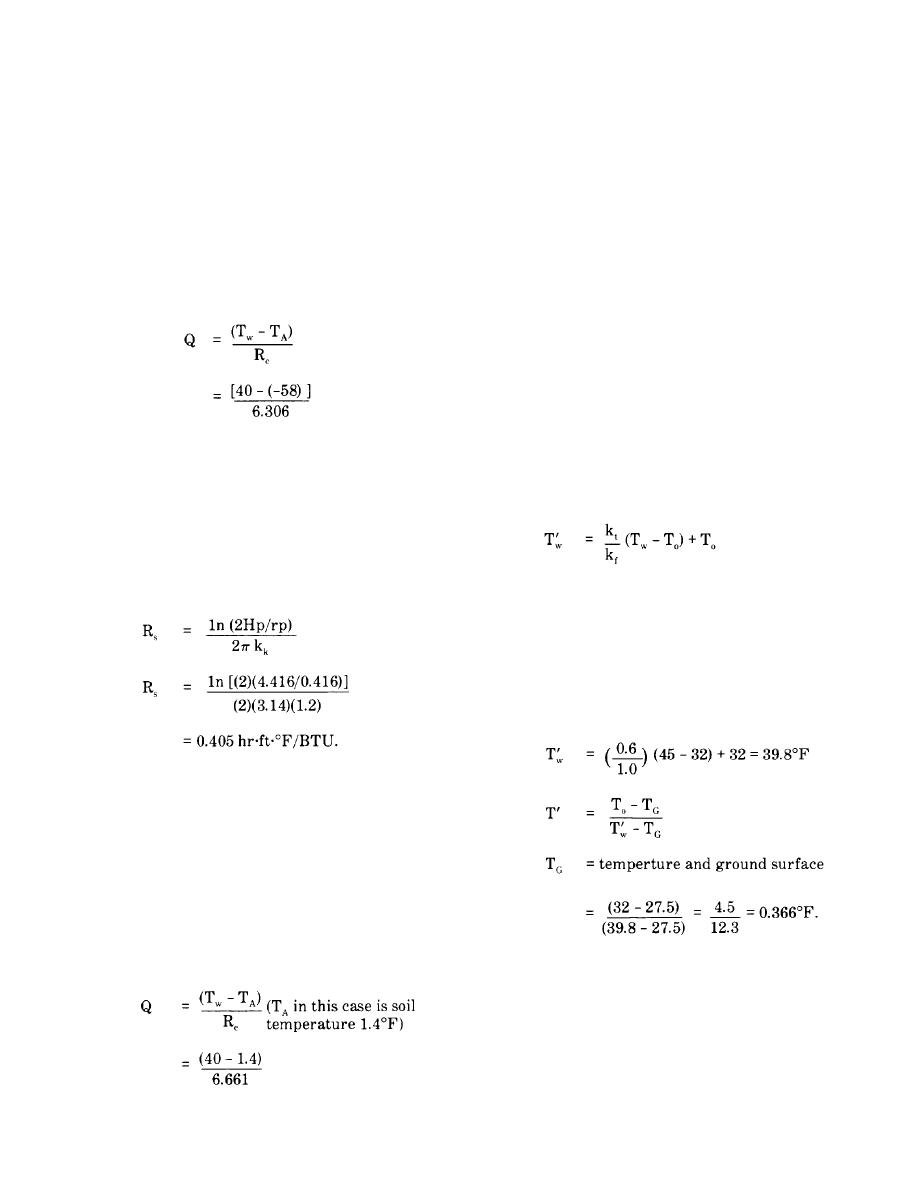
TM 5-852-5/AFR 88-19, Volume 5
above ground or at a depth of 4 feet. Assume the
= 5.79 BTU/hrlinear foot (LF) of pipe.
minimum air temperature is -58EF, and the minimum
mean daily soil temperature at a depth of 4 ft is
--This is about one-third the heat loss rate
1.4EF. Thermal conductivity of soil is 1.2
calculated for an above-ground installation in the
BTU/fthrEF.
same location. The responsible factor is the
(1) Above-ground installation. Assume a 5-inch
attenuation of the extreme surface temperature at
ID plastic pipe, with 2 inches of polyurethane
the 4-foot depth.
f. Determine the mean size of the thaw zone and
insulation:
Rc = 6.306 hrftEF/BTU (from previous
the average rate of heat loss from a 6-inch steel pipe
example).
buried 4 feet below the surface in a clay soil, where
--The water inside pipe will be maintained at
the soil thermal conductivities are kf (thawed) =
40EF, so that the maximum rate of heat loss
0.60 BTU/hrftEF and kf (frozen) = 1.0
BTU/hrftEF. Mean soil temperature at the ground
surface is 27.5EF and the water in the pipe is
maintained at 45EF. (See figure 12-sb, for
schematic, symbols and equations.) A bare steel pipe
has negligible thermal resistance so
Rp = 0.
= 15.5 BTU/hrLF pipe.
--Outer pipe radius rp = 6 inch/(2)(12) = 0.25 ft
(2) Buried installation. Assume that the top of the
pipe is 4 feet below the surface, the radius to the
--Depth to center of pipe Hp = 4.0 ft.
outer surface = 5 in. = 0.416 feet, the depth to
center of the pipe Hp = 4.416 ft, and the radius of
pipe = 0.416 feet (see equations, fig 12-5a) and Hp
where
Tw
= water temperature inside pipe
To
= soil temperature at interface of
thawed zone
= 32EF
--The air film is not a factor for a buried pipe of
Rc = Rp + RI + Rs
= 0.1396 + 6.116 + 0.405 (Rp and RI from
previous example)
= 6.66 1 hr~ft~0F/BTU.
--So, the heat loss Q equals
--Depth to center of thawed zone, H2:
H2 = (c)(coth A)
--Radius of thawed zone, r2:
12-19



 Previous Page
Previous Page
